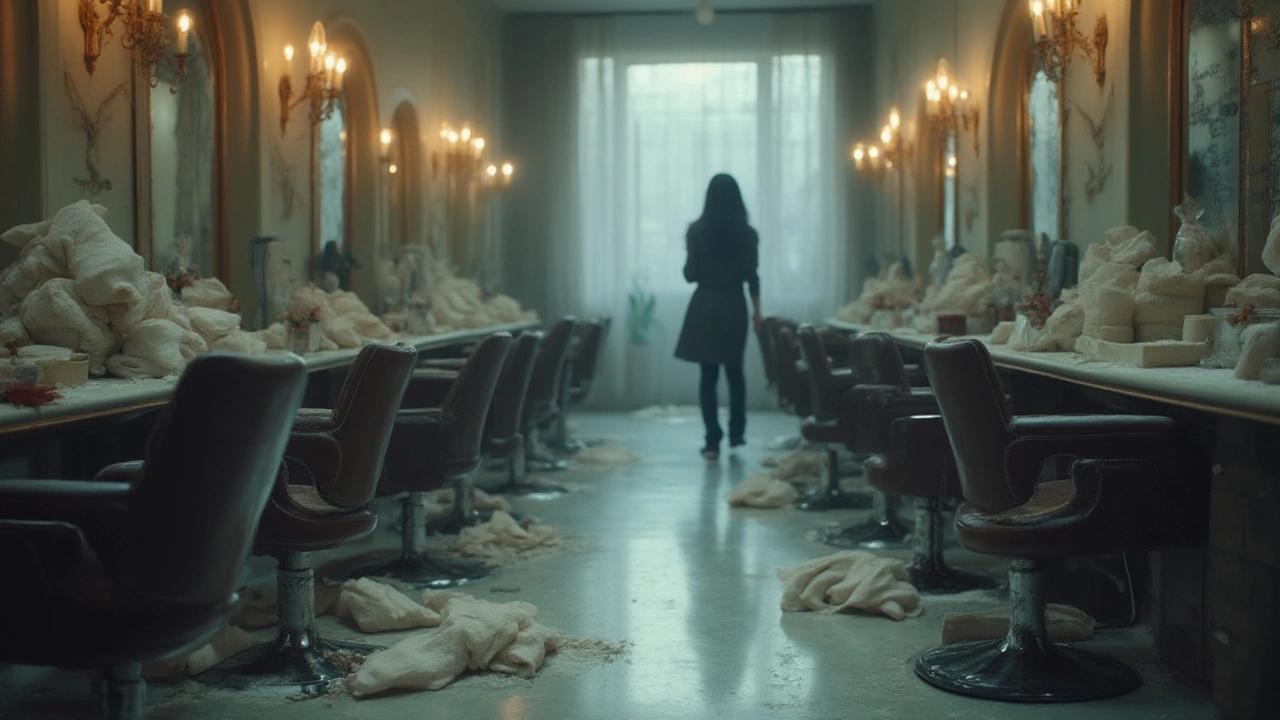
If you love that feeling of a fresh blow-dry or dream of a flawless manicure, it’s easy to see beauty salons as soothing havens. But step behind the soft lighting and mood music, and you’ll find real, not-so-glamorous challenges. Some salons mask their struggles well—others, not so much. Why do some visits leave clients thrilled, while others end in regret? Let’s dig into where salons slip up, what actually causes those let-downs, and how you can spot a problem before your day is ruined (been there, done that, went home with lopsided fringe).
Management, Staff, and Skills: The Real People Problem
Staff are the heart of a salon, but they don’t always beat in time. Consistency is a big sore spot. Your favorite stylist can turn a bad day bright, but what if they leave? Staff turnover is sky-high—one UK industry report from 2024 put average annual turnover in salons at nearly 35%. That’s triple the UK retail average. Good stylists rarely stay long without solid pay, real career paths, or management that has their backs. Some salons become revolving doors, which is rough for loyal clients hunting for their trusted hair wizard—nobody likes being a guinea pig for someone still learning to cut layers straight.
Training is hit and miss. Salons often hire new graduates straight from beauty school, promising ‘advanced courses’ that turn out to be YouTube videos on their lunch break. The UK’s National Hair & Beauty Federation regularly flags poor training as a client risk, especially when it comes to chemical treatments (bleach, perms, lash lifts). I once had chemical color run straight into my eye—thanks to a nervous trainee left unsupervised. Let’s not even mention waxing nightmares.
Communication is another crack in the foundation. Ever had a stylist nod excitedly at your Pinterest board—then deliver a ‘trim’ that lops four inches? Stylists sometimes talk in jargon, while clients want clear explanations. And when tools or time run out (one survey revealed 30% of appointments run late), clients get frustrated—especially if nobody apologizes.
Bad management makes everything worse. Favoritism, unclear policies, or ignoring complaints fester into a toxic culture. Poor scheduling can lead to rushed, overlapped bookings, or leaving clients stranded beneath the dryer. If you feel tension when you walk in, trust your gut.
Here are some tips for clients: stick with stylists and therapists you trust; don’t be shy about calmly saying what you want (and don’t want); and always look at licenses displayed—most UK salons must show up-to-date certificates for staff and business registration. And if you’re an owner, invest in your people first. Offering ongoing training and real feedback keeps skills sharp and morale up. Unhappy or under-trained staff won’t deliver the experience your salon needs to survive.

Hidden Hazards: Hygiene, Health, and Safety Issues
Ever walked into a salon and caught a whiff of something weird? That could be a hygiene red flag. Cleanliness isn’t just a nice-to-have; it’s the backbone of safety in any salon. Yet not every place delivers. According to a British Beauty Council poll last year, nearly 1 in 5 regular salon goers have witnessed staff reusing unsterilized tools or dirty towels. That’s not only gross but also a health risk. Fungal infections from nail salons, and even outbreaks of impetigo or ringworm linked to poor hairbrush hygiene, have popped up in local news. And don’t get me started on double-dipping wax sticks—bleh.
Chemical safety matters too. Salons handle strong ingredients: hair dyes, perms, acrylics. If a staff member hasn’t mixed bleach correctly, it can burn your scalp or lead to patchy results. Poor ventilation is common in busy urban salons—one survey in Manchester in 2023 found only 40% of salons pass proper air quality checks during peak hours. This isn’t just a headache factor, either: inhaling fumes regularly can cause respiratory issues for staff and clients.
Then there’s the risk of cross-contamination. Tools need to be disinfected after every use, but under pressure, shortcuts happen. You might not see it, but bacteria love damp towels and hairbrushes. Numbers don’t lie, so here’s a quick look:
| Hygiene Issue | % of Salons Reported | Potential Risk |
|---|---|---|
| Unsterilized Nail Tools | 27% | Infections (fungal/bacterial) |
| Dirty Towels/Brushes | 33% | Ringworm, Impetigo |
| Poor Ventilation | 60% | Headaches, respiratory problems |
| Improper Disposal of Chemical Waste | 18% | Skin irritation, water contamination |
Many local governments now do random inspections, but reports say penalties for first offences are usually just warnings. It’s up to you as a client to look for basic clues: clean floors, fresh towels, and staff who wash hands between each customer. Don’t ignore gut feelings—if you spot someone using the same bowl for multiple colors without cleaning, maybe it’s time to bolt. Owners, invest in proper sterilization equipment and make hygiene a visible part of the brand. Clients notice, and it pays—clean salons snag better reviews and repeat business.
One little tip: bring your own nail file and buffer. Many regulars do this and most places are fine with it. If you have allergies or sensitive skin, ask for a patch test before any colour or facial treatment, no matter how pushy the staff seem or how busy the reception is.

Pricing Transparency and Client Experience: Hidden Costs and Broken Promises
Have you ever sat in the chair, feeling pampered, and then nearly fainted at the bill? Pricing is a total minefield. Some salons list prices vaguely or not at all—and don’t even ask about ‘extras’. I had a friend who got charged £15 just for a ‘premium’ shampoo she never asked for. Many salons use add-on sales tactics: upselling deep conditioning, glosses, or serum applications you didn’t request, but which quietly tip the bill from reasonable to staggering. In 2024, a survey of 1,100 UK salon clients showed 53% felt their final bill was higher than expected due to add-on charges not mentioned up front.
Packages and memberships can also be confusing. Some seem like great deals, until you realize the small print excludes peak times or popular services. Loyalty schemes? Lovely idea—until you find the rewards expire in three months, just when you remember to book that much-promised ‘free’ blowout.
Another common pain point is cancellation and refund policies. Many salons either don’t specify, are unclear, or seem to change the rules on you. Miss an appointment by ten minutes? Some will still charge the full fee, even if you call. That makes clients grumpy, especially when salons themselves run late more often than not. According to a 2023 Mintel trend report, 41% of UK salon clients say cancellations or poor communication about appointments drove them elsewhere.
Quality of products and services can also let clients down. Salons sometimes cut corners, using cheaper dyes or low-grade skincare but still billing at luxury rates. Others use trusted brands only for online marketing shots, switching to off-label alternatives for actual treatments. If hair gloss promises three months of shine and fades after a week, that trust is hard to rebuild.
Physical comfort impacts every experience. Over-crowded waiting areas, blaring music, freezing A/C or sluggish Wi-Fi all eat away at that sense of pampering and escape. Accessibility isn’t always well thought out either; non-step-free entries, cramped toilet facilities, or no quiet zones leave many potential clients out. Customer service sometimes just doesn’t live up to the hype—unfriendly receptionists or stylists who don’t listen will lose repeat business fast.
So how do you protect yourself from salon stress? Always ask for an itemized bill before you sit in the chair. Double-check what’s included and don’t be afraid to query sneaky charges. If you have any special needs (disability access, fragrance-free products), phone ahead to see what really is available. And read reviews—look for specific details, because vague praise or complaints aren’t as helpful as those warning about surprise costs or hygiene. If you’re running a salon, ditch the tricks: transparency earns trust, reviews, and repeat business. Be upfront about pricing, offer fair packages, and train every staff member to provide five-star service, not just the ones on commission.
The salon weaknesses facing the industry today boil down to people, hygiene, money, and experience—but the fix is never one-size-fits-all. While salons might face tough odds, clients who speak up and owners who prioritize honesty, health, and staff can create that magical, relaxing space we all crave. Until then, keep those questions handy—and don’t be shy about taking Luna’s attitude into your next appointment. Cats ask for what they want, and they never tip for bad service.